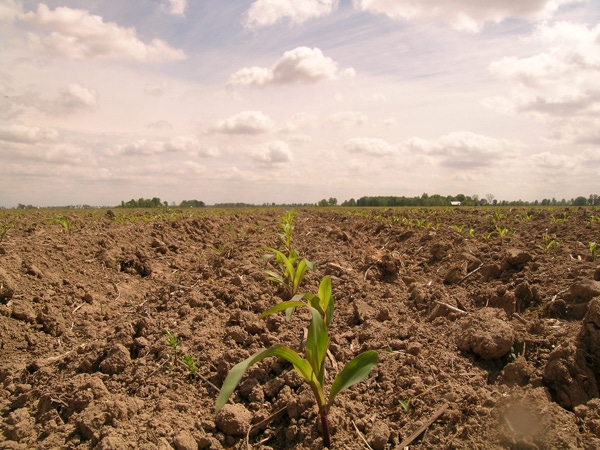December 6, 2011

Weather conditions at planting and harvest seemed to plague farmers in 2011. Despite frustrating meteorological developments, Ohio State University experts say continuous improvements in corn genetics and traits allowed producers to record impressive yields this year.
"Seed companies are screening hybrids and genetics on such a huge scale now that they are able to sort, screen and filter genetics that won't work under these conditions," said Peter Thomison, OSU Extension corn specialist and professor of horticulture and crop science. "The plant can now tolerate a number of stress conditions and still have phenomenal yield potential."
Thomison said university experts across the country make significant contributions to the continuing development of crop genetics, and credited a competitive private industry for the strength of their offerings to farmers in recent years.
In fact, he noted that the partnership between work done throughout the land-grant system and in private industry has largely fueled the productivity of American agriculture over the past century.
"University breeders are focused primarily on traits, some of the value-added traits in nutrition or pest management, so they're not necessarily in the business of generating new genetics that growers are commonly using," Thomison explained. "It's private breeders and companies like Pioneer, Monsanto, Seed Consultants and others that are making amazing strides and giving outstanding resistance to a number of plant stresses."
Farmer Matt Sullivan, who is assistant general manager of Ohio State's Farm Science Review, agrees that corn genetics are stronger than ever. Responsible in part for management of the 1,400-plus acres of the Molly Caren Agricultural Center outside London in central Ohio, he and his colleagues annually evaluate the latest in agricultural production technologies.
Sullivan said that in a year when planting date was a major concern for farmers, the quality of the seed going into the ground made a significant difference in the success of the crop.
"What we're seeing is that the new genetics are just tremendous," Sullivan said. "We're planting the newest genetics in soybeans and corn, and from a farmer's perspective, these corn hybrids are able to withstand what I would call extreme pressures, including heat and drought stress, and those things are what I'm seeing making a difference."
Thomison said that he has seen rapid improvements in corn genetics in the past few decades -- improvements that have allowed farmers to extract previously incomprehensible yield potential from the crop.
"When I first came here in the late '80s, if we were over 30,000 plants per acre, we were very susceptible to lodging under stressful conditions," he noted. "Now, at least 40 percent of final field populations are over 30,000, and we don't see the stalk lodging that we did in those days. That's one example of the work plant breeders and geneticists have done to improve the plant. You have growers now really pushing plant populations, and they are able to do so because of the improvements in stalk quality."
Thomison again credited the partnership between academia and the private industry for the ongoing advancements in productivity.
"Land-grant universities train nearly all of these folks, so this story is a testimony both to the university system and to the importance of competition in the marketplace. We are benefitting from the size and resources these private companies have been able to plow into the development of more stress-resistant corn."
You May Also Like




